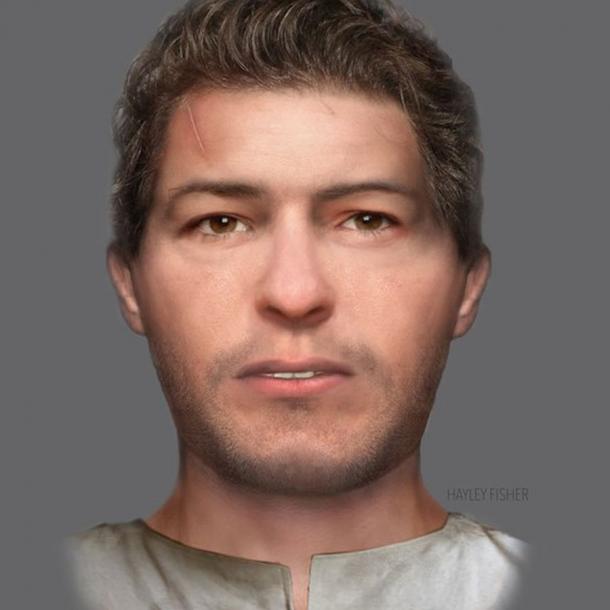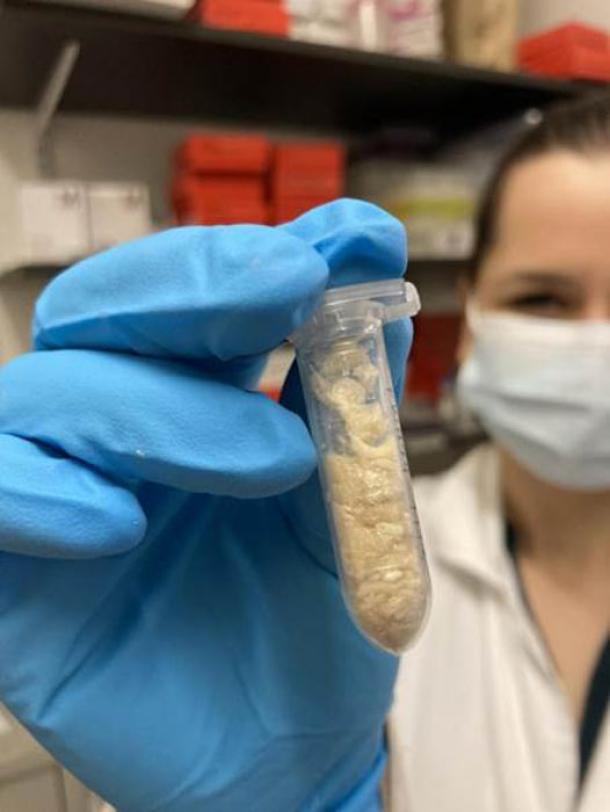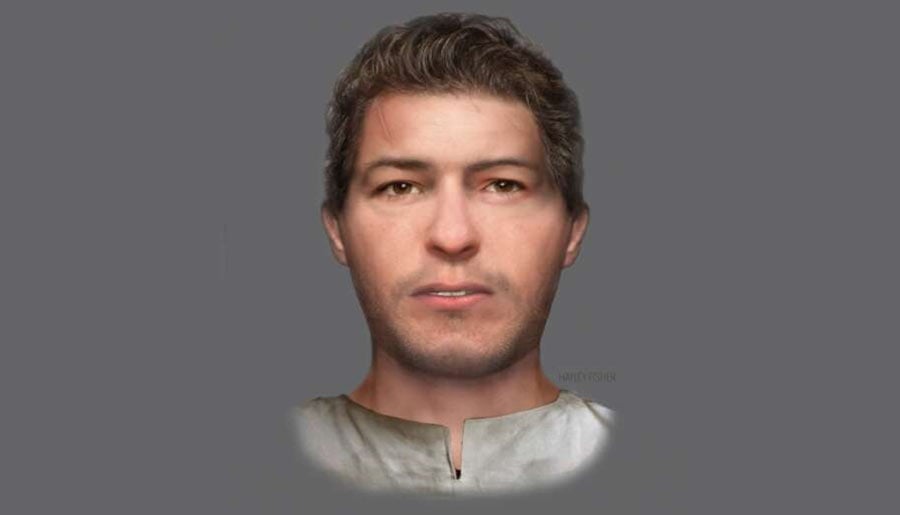Ancient Scots Were Sometimes Born Apart But Buried Together
Nine ancient Scots were buried in a mass grave in eastern Scotland some 1,400 years ago. However, a new study in the Archaeological and Anthropological Sciences journal shows they were born in surprisingly distant regions. Professor Kate Britton of Aberdeen University is the lead author of a new study into the bodies, and she said the team of researchers were ‘surprised’ to find that some ancient Scots in the mass grave were born “hundreds of miles apart.”
One thousand four hundred years ago, the bodies of nine adults and five children were dumped in a latrine at a former Roman bath at Cramond, near Edinburgh in Scotland. Unearthed in 1975, it was always assumed that the group of ancient Scots may have been from one family. But now, the body of one of the group, the so-called “Loch Lomond Wanderer,” has been studied up close showing the historical assumption was far from the truth.

Position of the individual skeletons of the ancient Scots found buried together in the latrine of the Cramond Roman bathhouse but who were born in various locations across Scotland. (City of Edinburgh Council 2014)
Ancient Scots: Following A Dental Treasure Map
Professor Britton said tooth enamel, particularly from teeth which form between around three and six years of age, “act like little time capsules containing chemical information about where a person grew up.” With their new dental map, the scientists discovered that six of the group of ancient Scots had chemical signatures consistent with what we would expect from individuals growing up in the area local to Cramond. However, the bodies of a man and a woman were very different from the other seven.
- Scotland’s Blair Atholl Man Was Actually From the West, Says Study
- Mysterious Underground Labyrinth in Scotland May Have Originally Been a Druid Temple
According to a report in Edinburgh News dental isotopic signatures suggested the female had grown up on the west coast while the male was from the Southern Uplands, Southern Highlands or Loch Lomond area. Hence, he is known as the “Loch Lomond Wanderer,” who must have travelled to Cramond, which was an important political center during the 6th-century Dark Ages.

Burial 1: facial reconstruction of an ancient Scot who may have come from Loch Lomond, a considerable distance from where he was buried in Cramond. (Hayley Fisheer / University of Aberdeen)
Charting Medieval Social Mobility Patterns of Ancient Scots
The study reveals new data about social mobility of the ancient Scots and the connections between people across Scotland in the early medieval period. Dr Orsolya Czére, post-doctoral researcher and lead author of the study, told Edinburgh Times that “It is often assumed that travel in this period would have been limited without roads.” Furthermore, strict political and military divides restricted the free flow of people at this tumultuous time in the history of what would become Scotland.
Dr Orsolya Czére explained that the Scotti tribe dominated Dál Riata on the west coast while the Picts controlled the north and east of the country, with the Britons in the south. But despite these territorial boundaries the new analysis of the ancient Scots’ burials from Cramond are revealing that it was not unusual to be buried “far from where you had originally grown up,” said Dr Czére.

Dr Orsolya Czére with extracted bone collagen from one of the ancient Scots found in the group grave at Cramond, Scotland. (University of Aberdeen)
Ancient Scots Were Using Cramond Before 10,000 BC
For a long time, Cramond was known as the earliest site of human occupation in Scotland. According to the BBC, back in 2001 a group of Mesolithic nomadic hunter-gatherers left behind heaps of discarded hazelnut shells at Cramond, which were carbon-dated to before 10,000 BC. It is believed the site was chosen because it is located where the Firth of Forth and the River Almond meet, providing the ancient survivalists with easy access to the area’s rich oyster and mussel beds.
- Burnt Hill Fort in Dark Ages Scotland Was Likely the Stronghold of the Mysterious Rheged Kingdom
- After Life-Long Search, Detective Finds Lost Chief of Scottish Clan: ‘The Buchanan’ is its First Chief in 337 Years
Around 142 AD, Roman Emperor Antoninus Pius commanded the construction of a 6-acre (2.4-hectare) sea fort at the mouth of the River Almond guarding the eastern aspects of the Antonine Wall (named after emperor Pius, as was Hadrian's Wall). This tactical location, with its abundances of natural resources, continued to be a seat for elite families throughout the medieval period.
John Lawson, City of Edinburgh Council archaeologist and co-author and lead archaeologist on the new investigations at Cramond, said, “Previous studies have suggested that those buried here [Cramond] were of high social status, even nobility. This means the nine bodies belonged to, at one time, ‘well-connected individuals,’ with lives that brought them across the country.”
Top image: Facial reconstruction of one of the ancient Scots who may have come from Loch Lomond but was buried at Cramond. Source: Hayley Fisheer / University of Aberdeen
By Ashley Cowie



















